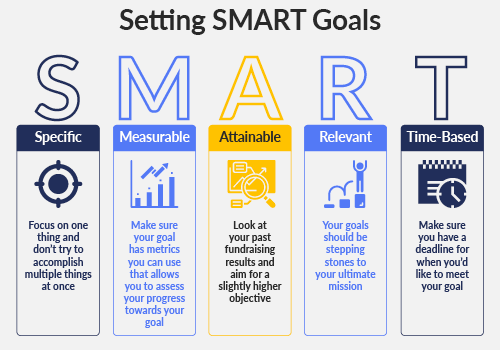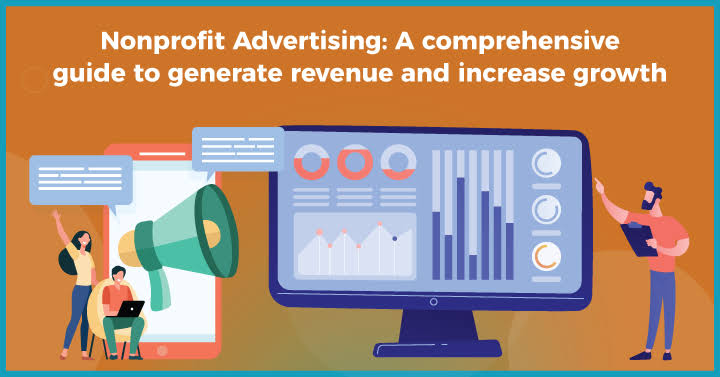Non profit advertising serves as a powerful tool for driving awareness, inspiring action, and mobilizing support for social causes. Unlike commercial advertising, which prioritizes sales and revenue, non profit advertising campaigns focus on addressing societal challenges, raising funds, and fostering behavioral change.
These campaigns are vital for organizations that rely on the goodwill and collective efforts of individuals to achieve their mission. They create avenues for connecting with audiences on an emotional level, encouraging them to contribute through donations, volunteer work, or advocacy.
The purpose of non profit advertising campaigns is to deliver meaningful messages that resonate deeply with the target audience. They are crafted to ignite empathy, educate, and ultimately drive participation.
By focusing on a cause rather than financial gain, these campaigns are uniquely positioned to address complex social issues.
For example, non profit advertising examples like campaigns for environmental conservation, public health, or social justice demonstrate the power of storytelling and strategic communication to inspire action.
These efforts are especially crucial in today’s world, where raising awareness and garnering support for such causes is essential for progress. A key aspect of non profit advertising is the ability to distill a complex issue into a clear and compelling message.
Non profit organizations often work on multifaceted problems, and simplifying these into a relatable narrative is critical for success. The emotional appeal in such campaigns sets them apart, as they aim to create personal connections with the audience.
Visual storytelling plays a significant role here, with powerful images and videos often used to evoke empathy and drive engagement. For instance, when promoting child welfare, non profits may use visuals of children benefitting from their programs to emphasize the importance of their work.
The effectiveness of non profit advertising campaigns also depends on a deep understanding of the target audience. By identifying the demographic most likely to support their cause, organizations can tailor their messaging to address the values, concerns, and aspirations of that group.
This targeted approach ensures that the limited resources available to non profits are used effectively, reaching the right people at the right time.
Another critical element is authenticity, as trust is fundamental to the success of non profit advertising. People are more likely to support organizations they perceive as genuine and transparent.
By showcasing real-life testimonials, success stories, and behind-the-scenes insights, non profits can build credibility and demonstrate the tangible impact of their efforts.
This authenticity strengthens the connection between the organization and its audience, fostering long-term support. Non profit advertising campaigns often rely on creative strategies to overcome resource constraints.
While commercial advertising benefits from large budgets, non profits must find innovative ways to make an impact without overspending. Social media has become a game-changer in this regard, providing a cost-effective platform for reaching vast audiences.
Through platforms like Instagram, Twitter, and Facebook, non profits can share their message, engage with supporters, and even run targeted advertisements to maximize their reach.
Collaboration also plays a significant role in the success of non profit advertising. Partnerships with organizations, brands, or influencers who share similar values can amplify a campaign’s message and extend its reach.
For instance, influencers and celebrities often lend their platforms to support non profit advertising campaigns, helping to engage new audiences and boost credibility.
These collaborations highlight the importance of building networks and leveraging shared resources to achieve common goals. Measuring the impact of non profit advertising is essential to determine its effectiveness and guide future efforts.
Unlike commercial advertisements, which measure success in terms of sales, non profit campaigns evaluate success through metrics such as increased donations, volunteer participation, or social media engagement.
These metrics provide valuable insights into the campaign’s performance and help organizations refine their strategies for maximum impact.
Read Also: How to Do Affiliate Marketing on Instagram for Beginners
Benefits of Non Profit Advertising Campaigns

1. Raising Awareness for Critical Issues: One of the primary purposes of non profit advertising campaigns is to bring attention to pressing social issues. Topics like poverty, climate change, health crises, and human rights often go unnoticed without deliberate efforts to highlight them.
These campaigns educate the public on these matters, providing facts, statistics, and emotional narratives to shed light on their importance. Raising awareness can be the first step toward solving complex problems by ensuring they are no longer ignored.
2. Mobilizing Resources and Support: Non profit advertising campaigns help organizations secure financial and non-financial support. Donations are a significant part of non profits’ operations, and advertising campaigns effectively communicate the need for funding to potential donors.
Beyond financial contributions, these campaigns also inspire people to volunteer their time, skills, or resources, furthering the reach and impact of the organization.
For example, campaigns like UNICEF’s “For Every Child” or the Red Cross’s blood donation drives have successfully mobilized millions of individuals to contribute to their missions.
3. Influencing Behavioral Change: Non profit advertising has the power to inspire long-term behavioral changes. Campaigns focusing on issues such as smoking cessation, safe driving, or environmental conservation encourage people to adopt healthier or more sustainable habits.
By framing their messages around benefits to individuals and society, non profits can promote positive changes in behavior that contribute to the greater good.
A great example is the “Friends Don’t Let Friends Drive Drunk” campaign, which reduced drunk-driving incidents and saved countless lives.
4. Building Community Engagement: Non profit advertising campaigns foster a sense of community by uniting individuals who share similar values and goals.
These campaigns create opportunities for people to connect, collaborate, and support each other in achieving a common purpose. When people feel part of a collective effort, they are more likely to stay engaged and committed to the cause.
Social media platforms have further enhanced community-building through non profit campaigns, allowing supporters to share, comment, and actively participate in spreading the message.
5. Strengthening Organizational Credibility: Transparency and trust are essential for non profits to succeed. Advertising campaigns that showcase an organization’s work, impact, and success stories help build credibility among the public.
By highlighting real-life examples of how contributions have made a difference, non profits can strengthen their reputation and attract long-term supporters.
For instance, campaigns by organizations like Habitat for Humanity often feature testimonials from beneficiaries, which boosts trust and reinforces the organization’s reliability.
6. Amplifying the Reach of the Cause: Non profit advertising campaigns enable organizations to expand their reach and connect with a broader audience. Whether through traditional media like TV and radio or digital platforms like social media and search engines, these campaigns ensure that the message reaches diverse demographics.
This amplified reach is particularly important for global issues such as climate change or disaster relief, where awareness and action on a large scale are necessary to create meaningful impact.
7. Attracting Partnerships and Collaborations: Effective non profit advertising campaigns often catch the attention of like-minded organizations, brands, or influencers who want to contribute to the cause. Partnerships formed through such campaigns can significantly enhance the resources and capabilities of a non profit organization.
For example, many non profit campaigns have partnered with corporate brands to run joint initiatives, such as TOMS Shoes’ “One for One” campaign, which combines business with social responsibility.
8. Encouraging Advocacy and Policy Change: Non profit advertising campaigns play a significant role in influencing policy changes and driving advocacy efforts.
By raising public awareness and generating widespread support for a cause, these campaigns can pressure policymakers to act. Advocacy-focused campaigns often highlight injustices or systemic problems, urging governments and institutions to implement reforms.
A notable example is the “It Gets Better” campaign, which raised awareness about LGBTQ+ rights and helped drive significant social and legal advancements.
9. Creating Emotional Connections: Non profit advertising thrives on emotional storytelling that connects with people on a deeper level. By using real stories, impactful visuals, and relatable narratives, these campaigns evoke empathy and compassion.
This emotional connection not only inspires people to take action but also fosters a lasting relationship between the organization and its supporters.
10. Increasing Awareness of Non Profit Examples: Non profit advertising campaigns also showcase the diversity of work being done by different organizations, inspiring others to follow suit.
Highlighting non profit advertising examples, such as campaigns by WWF, Amnesty International, or Feeding America, demonstrates how innovative and impactful strategies can drive meaningful change. These examples serve as a blueprint for other organizations seeking to create their campaigns.
Types of Non Profit Advertising Campaigns You Should Consider

Non profit advertising campaigns are essential for raising awareness, garnering support, and inspiring action for various causes. The type of campaign chosen depends on the goals of the organization, the target audience, and the message being conveyed.
Different strategies and approaches can be employed to maximize reach and effectiveness. Below are some types of non profit advertising campaigns you should consider.
1. Awareness Campaigns: Awareness campaigns aim to educate the public about a specific issue or cause. These campaigns are designed to inform people about problems that may not be widely recognized and to spark conversations around them.
By sharing facts, statistics, and impactful stories, awareness campaigns help bring attention to issues such as climate change, poverty, or mental health.
For example, organizations like the World Wildlife Fund (WWF) often run campaigns to raise awareness about endangered species and the importance of conservation efforts.
2. Fundraising Campaigns: Fundraising campaigns are critical for non profit organizations as they rely on donations to fund their activities and initiatives.
These campaigns typically focus on encouraging individuals, businesses, and communities to contribute financially. Fundraising campaigns can be conducted through direct mail, social media, events, or crowdfunding platforms.
For instance, Giving Tuesday, a global generosity movement, encourages people to donate to their favorite causes and non profits. This type of campaign emphasizes the impact that financial contributions can have on the organization’s mission.
3. Advocacy Campaigns: Advocacy campaigns aim to influence public opinion and drive policy or social change. These campaigns focus on rallying support for a specific cause and persuading policymakers or governments to take action.
Advocacy campaigns often use petitions, protests, and digital media to amplify their message and mobilize people. A notable example is Amnesty International’s campaigns to protect human rights and advocate for justice for oppressed communities.
4. Behavioral Change Campaigns: Behavioral change campaigns focus on encouraging individuals to adopt healthier, safer, or more sustainable behaviors.
These campaigns aim to address issues such as smoking, drunk driving, environmental conservation, or healthy eating habits. By presenting compelling reasons and solutions, they inspire people to make positive changes in their daily lives.
For instance, the “Reduce, Reuse, Recycle” campaign promotes environmental sustainability by encouraging individuals to minimize waste and adopt eco-friendly practices.
5. Event-Based Campaigns: Event-based campaigns are centered around a specific event, such as a charity walk, gala, or concert. These campaigns are designed to generate excitement and participation while raising funds and awareness for the cause.
Event-based campaigns create opportunities for non profits to engage with their audience directly and foster a sense of community. For example, breast cancer awareness walks, such as the Susan G. Komen Race for the Cure, are effective event-based campaigns that bring people together for a shared purpose.
6. Social Media Campaigns: Social media campaigns are highly effective for non profits due to their low cost and vast reach. These campaigns leverage platforms like Facebook, Instagram, Twitter, and TikTok to engage with supporters, share stories, and drive action.
Social media allows non profits to create viral campaigns that reach a global audience. One successful example is the ALS Ice Bucket Challenge, which raised millions of dollars for ALS research and gained worldwide attention through social media.
7. Partnership Campaigns: Partnership campaigns involve collaborations between non profits and businesses, influencers, or other organizations to amplify the message and resources. These campaigns benefit from shared audiences and increased credibility, as they bring together different entities with a common goal.
For example, TOMS Shoes partnered with various non profits for their “One for One” campaign, where every purchase helped provide shoes to a person in need.
8. Storytelling Campaigns: Storytelling campaigns focus on sharing compelling narratives about the people or communities impacted by the non profit’s work. These campaigns aim to create emotional connections with the audience, making the cause more relatable and inspiring action.
For instance, charity: water uses storytelling campaigns to show the direct impact of clean water initiatives on communities around the world.
9. Volunteer Recruitment Campaigns: Volunteer recruitment campaigns are designed to attract individuals who can contribute their time and skills to the organization.
These campaigns emphasize the importance of volunteering and how it helps achieve the non profit’s mission. By showcasing the personal benefits of volunteering, such as skill development and a sense of fulfillment, these campaigns motivate people to get involved.
Non profits like Habitat for Humanity often run volunteer recruitment campaigns to encourage participation in building homes for those in need.
10. Crisis Response Campaigns: Crisis response campaigns are created during emergencies, such as natural disasters, pandemics, or humanitarian crises.
These campaigns aim to raise funds, mobilize resources, and provide immediate relief to affected communities. Quick action and effective communication are critical for the success of these campaigns.
For example, the Red Cross frequently runs crisis response campaigns to address urgent needs during disasters like hurricanes or earthquakes.
11. Educational Campaigns: Educational campaigns focus on providing knowledge and resources to the public about specific issues or topics. These campaigns aim to empower individuals with information that can help them make informed decisions or take action.
An example of an educational campaign is Planned Parenthood’s efforts to provide information on reproductive health and rights, helping people make better health-related choices.
12. Crowdfunding Campaigns: Crowdfunding campaigns leverage online platforms to raise funds from a large number of people. These campaigns are often time-sensitive and rely on small contributions from a wide audience. Crowdfunding is particularly effective for specific projects or initiatives.
Platforms like GoFundMe and Kickstarter have been used by non profits to fundraise for everything from community projects to medical aid.
Read Also: How to Earn Money Through Amazon Affiliate Marketing
How to Set Clear Objectives for Your Non Profit Advertising Campaigns

Setting clear objectives is the foundation of a successful non profit advertising campaign. Without well-defined goals, it becomes challenging to measure success, allocate resources effectively, and drive meaningful impact.
Whether your focus is on raising awareness, mobilizing donations, or influencing behavioral change, having clear objectives ensures that your efforts are targeted and result-driven.
1. Define the Purpose of Your Campaign: The first step in setting objectives is to clearly define the purpose of your campaign. Ask yourself what you want to achieve.
Is it raising awareness about a specific cause, generating funds, recruiting volunteers, or influencing policy change? Identifying the primary purpose of your campaign will help shape all subsequent decisions and strategies.
For example, a campaign aimed at promoting environmental sustainability might focus on educating the public about reducing waste, while a disaster relief campaign might aim to raise emergency funds quickly.
2. Make Your Objectives Specific: Objectives should be specific to ensure clarity and focus. Vague goals like “raise awareness” or “increase support” are hard to measure and achieve. Instead, frame your objectives in precise terms.
For instance, instead of saying, “Raise awareness about water scarcity,” you can specify, “Reach 100,000 individuals with information about water scarcity through social media within three months.” Specific objectives provide a clear direction for your campaign and make it easier to measure progress.
3. Ensure Objectives Are Measurable: Measurable objectives are critical for tracking progress and evaluating the success of your campaign. To make objectives measurable, include quantifiable metrics such as percentages, numbers, or timelines.
For example, if your objective is to recruit volunteers, you could state, “Attract 500 new volunteers for our food distribution program by the end of the year.” Measurable objectives allow you to assess whether your campaign is on track and make necessary adjustments.
4. Align Objectives with Your Mission: Your campaign objectives should align with the overall mission and vision of your non profit organization. Every advertising effort should contribute to the larger goals of the organization.
For example, if your non profit focuses on education, your campaign objectives might include raising funds to build schools, providing scholarships, or increasing literacy rates. This alignment ensures that your campaign reinforces your organization’s purpose and builds long-term credibility.
5. Consider Your Target Audience: Understanding your target audience is essential when setting objectives. Consider who you are trying to reach with your campaign and tailor your goals accordingly.
For instance, if your target audience consists of young adults, your objectives might focus on leveraging social media platforms to engage this demographic. Similarly, if your audience is policymakers, your objectives might center on advocacy efforts and influencing legislation.
6. Set Realistic Goals: While ambition is important, it’s equally crucial to set objectives that are realistic and achievable within your resources and constraints. Unrealistic goals can lead to disappointment and wasted resources.
For example, if your organization has limited funds, setting an objective to reach one million people might not be feasible. Instead, you could aim to reach 50,000 people in a targeted region and expand gradually.
7. Make Objectives Time-Bound: Adding a timeline to your objectives creates a sense of urgency and helps prioritize tasks. Time-bound objectives provide a clear endpoint for your campaign and allow you to evaluate its success within a specific timeframe.
For example, instead of saying, “Increase donations,” you could say, “Increase donations by 20% within six months.” A defined timeline keeps your team focused and accountable.
8. Incorporate SMART Criteria: The SMART framework is an effective tool for setting clear objectives. SMART stands for Specific, Measurable, Achievable, Relevant, and Time-bound.
- Specific: Define exactly what you want to achieve.
- Measurable: Include metrics to track progress.
- Achievable: Set goals that are realistic given your resources.
- Relevant: Align objectives with your mission and campaign purpose.
- Time-bound: Specify a deadline for achieving your goals.
For example, a SMART objective could be, “Raise $50,000 through a crowdfunding campaign within three months to support our community health initiative.”
9. Identify Key Performance Indicators (KPIs): To monitor the success of your campaign, establish key performance indicators (KPIs) that align with your objectives. KPIs are measurable values that demonstrate how effectively you are achieving your goals.
For example, if your objective is to increase social media engagement, your KPIs might include the number of likes, shares, comments, or followers gained during the campaign. By tracking these metrics, you can evaluate the effectiveness of your strategies and make data-driven decisions.
10. Involve Your Team in Objective-Setting: Setting objectives should be a collaborative process that involves input from your team members. This ensures that everyone is aligned with the campaign goals and understands their roles in achieving them.
Encourage brainstorming sessions and open discussions to gather diverse perspectives and ideas. Collaborative objective-setting also fosters a sense of ownership and accountability among team members.
11. Test and Refine Your Objectives: Before launching your campaign, test your objectives to ensure they are practical and achievable. Conduct pilot tests or small-scale trials to identify potential challenges and refine your goals accordingly.
For example, if your objective is to increase email sign-ups, you could run a test campaign to evaluate the effectiveness of your messaging and adjust your approach based on the results.
12. Communicate Objectives Clearly: Once your objectives are set, communicate them clearly to all stakeholders, including your team, donors, and partners. Clear communication ensures that everyone understands the purpose of the campaign and works together toward achieving the goals.
Use visual tools such as charts, presentations, or dashboards to track and share progress. Transparent communication builds trust and fosters collaboration.
Frequently Asked Questions on The Complete Guide to Non Profit Advertising Campaigns

1. What is a non profit advertising campaign?
A non profit advertising campaign is a marketing initiative designed to promote the mission, values, and goals of a non profit organization. These campaigns aim to raise awareness, encourage donations, recruit volunteers, or advocate for social change.
Non profit advertising can be carried out through various channels such as digital media, print, television, or events to reach a broader audience and inspire action.
2. Why is non profit advertising important?
Non profit advertising is crucial because it helps organizations communicate their cause to the public, raise necessary funds, and engage with supporters.
It allows non profits to reach individuals who might not otherwise know about their work and motivates them to take action, whether through donations, volunteering, or spreading the message further.
Effective non profit advertising ensures that the organisation’s voice is heard and that it can continue making a positive impact on the community.
3. What are the key elements of a successful non profit advertising campaign?
A successful non profit advertising campaign includes several key elements:
1. Clear objectives: Well-defined and measurable goals such as increasing donations, raising awareness, or gaining new supporters.
2. Target audience: Understanding the demographics and interests of your audience is crucial for tailoring the campaign message.
3. Compelling message: Crafting an emotional, clear, and persuasive message that resonates with your audience.
4. Multichannel approach: Using various platforms (social media, emails, events, etc.) to reach the target audience effectively.
5. Strong call to action: Encouraging your audience to act, whether that’s donating, volunteering, or spreading the message.
6. Continuous evaluation: Tracking the campaign’s progress and adjusting strategies as needed to ensure success.
4. How do I set objectives for my non profit advertising campaign?
Setting clear and achievable objectives for your non profit advertising campaign is crucial. To do this, ensure that your objectives are specific, measurable, achievable, relevant, and time-bound (SMART).
For example, if your goal is to raise funds for a new project, your objective could be, “Raise $50,000 within three months through online donations.” By having specific goals, you can better track your progress and adjust strategies as needed.
5. How can social media be used in non profit advertising campaigns?
Social media is one of the most effective and cost-efficient tools for non profit advertising. Platforms such as Facebook, Instagram, Twitter, and LinkedIn provide a space for organizations to engage directly with their audience, share stories, and promote calls to action.
Social media campaigns can include creating posts, running ads, sharing user-generated content, and organizing virtual events or fundraisers. Utilizing hashtags and tagging influential individuals or organizations can also help amplify the campaign’s reach.
6. What is the difference between a non profit advertising campaign and a for-profit advertising campaign?
While both non profit and for-profit advertising campaigns aim to promote a product, service, or cause, the main difference lies in the objectives and the end goal.
Non profit advertising campaigns typically focus on raising awareness, generating donations, or inspiring social change, with the goal of improving society or supporting a cause. For-profit advertising, on the other hand, is usually aimed at increasing sales, revenue, or market share for a business.
Non profit advertising emphasizes the emotional connection with the cause, while for-profit campaigns may focus more on financial transactions or product promotion.
7. How do I measure the success of a non profit advertising campaign?
The success of a non profit advertising campaign is determined by evaluating whether it met its objectives. Common metrics to track include:
1. Donations raised: If fundraising was the objective, track how much was collected.
2. Engagement metrics: For awareness campaigns, measure likes, shares, comments, and website traffic.
3. Volunteer sign-ups: If recruiting volunteers was a goal, track how many new volunteers signed up.
4. Media coverage or press mentions: For advocacy campaigns, monitor how much media attention your cause has received.
5. Action taken: Measure how many individuals took specific actions, such as signing a petition or sharing information with others.
8. What are some examples of successful non profit advertising campaigns?
There are many inspiring non profit advertising campaigns that have achieved remarkable success. A few notable examples include:
1. The ALS Ice Bucket Challenge: A viral campaign that raised over $115 million for ALS research through social media engagement.
2. #MeToo Movement: A powerful social media campaign that raised awareness about sexual harassment and empowered individuals to share their experiences.
3. Charity: Water’s “The Birthday Project”: A campaign where people forgo birthday gifts and instead ask for donations to fund clean water projects.
These campaigns were successful due to their emotional appeal, clear calls to action, and effective use of digital platforms.
9. Can a non profit advertising campaign be run on a small budget?
Yes, non profit advertising campaigns can be effective even on a small budget. Many low-cost strategies can help non profits maximize their impact without requiring large investments.
Social media, email marketing, and grassroots efforts such as word-of-mouth and community partnerships can significantly boost a campaign’s reach without incurring major expenses.
Additionally, crowdfunding platforms, which often have no upfront costs, can be used for fundraising campaigns. Creativity, leveraging volunteers, and partnerships with influencers or other non profits can also help extend the campaign’s reach.
10. How do I create a compelling message for my non profit advertising campaign?
A compelling message for your non profit advertising campaign should evoke emotions and connect with the values of your target audience. Begin by clearly defining the problem your non profit seeks to solve and explain why it matters.
Highlight the impact of your work and use real stories or testimonials to make your cause relatable. Be clear about how people can help, and emphasize the urgency of the situation. A strong emotional appeal combined with a clear call to action will inspire your audience to engage with your campaign.
Read Also: 4 Steps to help an Orange Tree Produce Sweet Oranges
Do you have any questions, suggestions, or contributions? If so, please feel free to use the comment box below to share your thoughts. We also encourage you to kindly share this information with others who might benefit from it. Since we can’t reach everyone at once, we truly appreciate your help in spreading the word. Thank you so much for your support and for sharing!






